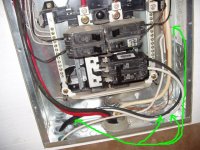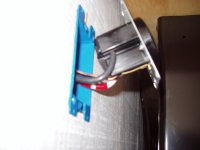Today I tore out the four wire wiring as seen in my opening post and replaced it with three wire 6AWG 600 volt black, white and bare copper ground. The run was only around two feet so the expense was minimal.
The old white wire was as suspected just clipped off above the oultet's wall box with no wire nut.
I have sure learned a lot about 230V circuits since I started this thread but by no means will I venture any further into the relm of "electricianism" without consulting the forum as I did here.
Nothing on the horizon but that can always change, thanks all.
The old white wire was as suspected just clipped off above the oultet's wall box with no wire nut.
I have sure learned a lot about 230V circuits since I started this thread but by no means will I venture any further into the relm of "electricianism" without consulting the forum as I did here.
Nothing on the horizon but that can always change, thanks all.


